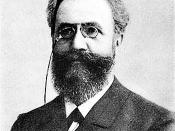Encoding, Storage and Retrieval: The Processes of Memory
Memory is very complex and a little mysterious. There is a lot to know about the way one can organize a lifetime of memories. Research has helped clarify several missing elements in the traditional three-stage memory model. One can now understand the way information is changed as it is encoded, stored and then later retrieved. These three processes can be described similarly to the memory of a computer.
The first step to remembering a piece of information is encoding. It is the process of translating information into neural codes that will be retained in memory. In other words, it is first getting the information into one's brain. The brain encodes sensory information (sound, visual, touch, etc.) into a neural code that it can understand and use. This step is similar to a computer in the sense that to put information into a computer, you need to type it in on the keyboard.
Then the computer translates it into its own language so that it can understand it and be able to use it at a later time.
The second step is to store it. Storage is the process of retaining neural coded information over time. The encoded information is then stored in the brain. In computers the information is stored on a disk or hard drive which is very similar to the way the brain works. The information is kept there until it is needed in the future.
The final step in memory is retrieval. It is the process of recovering information from memory storage. Retrieval requires searching and locating the appropriate information and bringing it out of storage, into conscious awareness where it can be used or, in the case of a computer, to the monitor so that it can...


